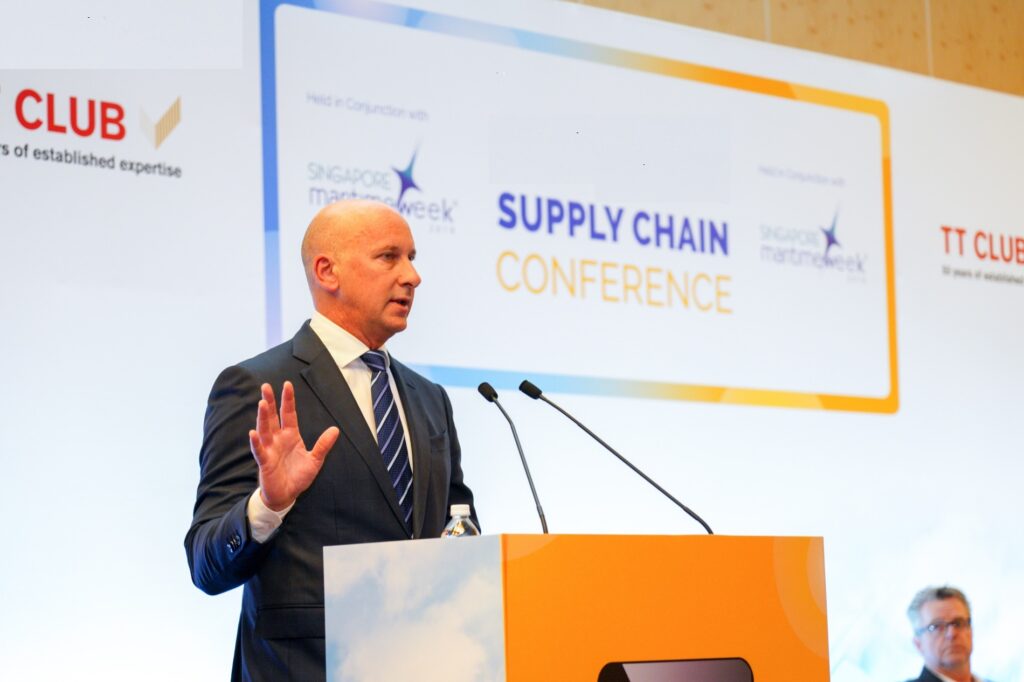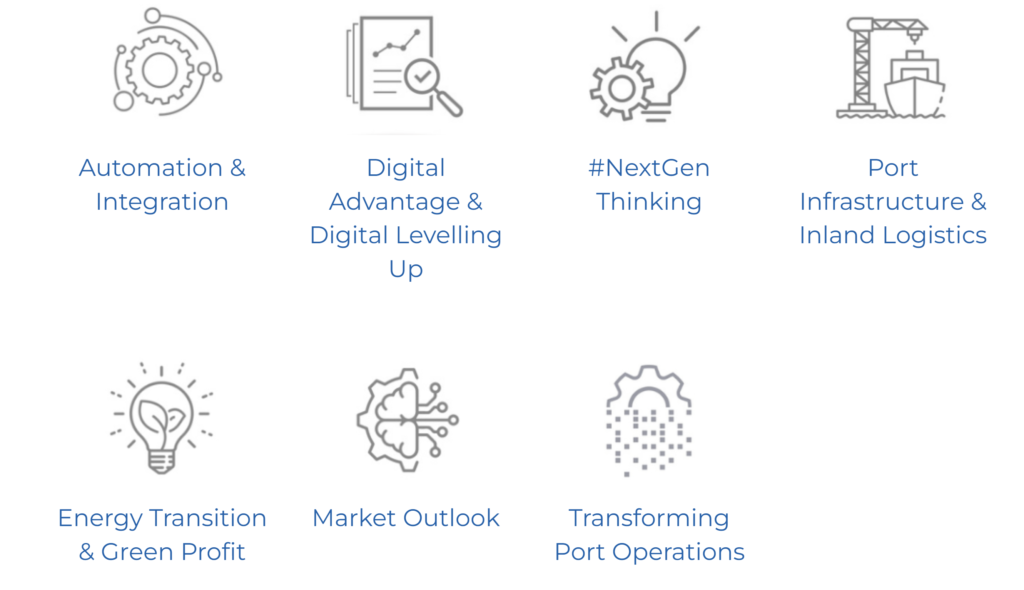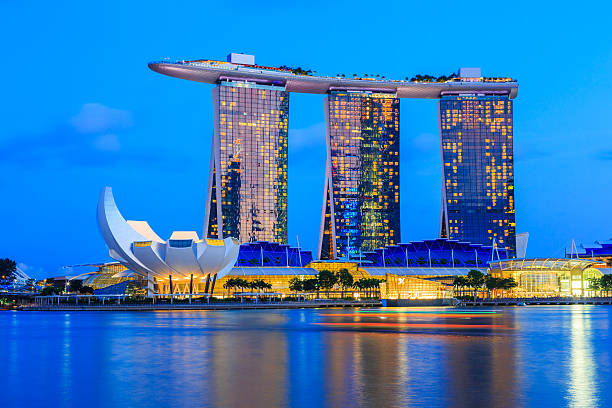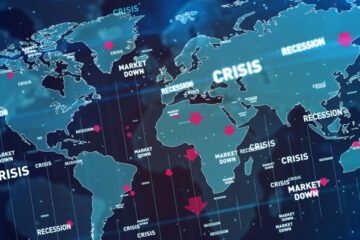Join Andrew as he moderates a key supply chain conference in Singapore – Nov 2022, Marina Bay Sands Hotel and Conference Centre

Despite the global social, political and economic uncertainty (business as usual??) there is one thing for certain …
As the world economy and international travel reopen, the logistics sector must now capitalize on innovation and articulate collaborative efforts to become more resilient against the challenges that this new world brings with it.

SUPPLY DISRUPTION: WHAT ARE THE REASONS BEHIND IT AND HOW IS THE SECTOR ADAPTING?
For more than two years, we have witnessed unprecedented disruption across the supply chain. While the most apparent reason for this would be the pandemic that brought world economies to a hiatus, the explanation is more complex. Lockdowns worldwide have contributed to the growth of E-Commerce, increasing consumption rates exponentially. However, as major production facilities are concentrated in Southeast Asia, and this region has been experiencing continuous closures in an attempt to contain new Covid-19 outbreaks, shippers have not been able to replenish inventories, leading to stakeholders across the supply chain being unable to meet demand.
Even despite the extra efforts to increment the capacity in the Asia-North Europe route, seasonal bottlenecks, climate change factors and blockade episodes have worsened this situation: According to RBC Capital Markets, 77% of ports were experiencing congestion heading into the holiday season in Q4 of 2021, and with the Chinese New Year shortly after, the disruption in the supply chain was far from over – can we assume that the same will happen in Q4 of 2022?
Eva Yan Liu, North China Team Leader at Maersk-owned company, Twill, said that we are also seeing a change in the approach to supply chain management, from a just-in-time model to just-in-case.
THE EVOLUTION FROM SUPPLY CHAIN TO SUPPLY NETWORK: POTENTIAL NEW HUBS, TRADE ROUTES AND THEIR EFFECT UPON LOGISTICS INFRASTRUCTURE
As it is with Vietnam, for other Asian countries with the potential to become manufacture leaders, the modernization and sustainable development of their port and logistics infrastructure is vital. In recent years, we have seen important infrastructure investment across the region -and the world-, particularly coming from China. Known to the world as the Belt and Road Initiative (BRI), this strategy pursued by the Asian giant consists of significant investment in logistics infrastructure, strengthening its presence, both regionally and globally.
Yet, the G7 announced during its last meeting the launch of their Bring Back a Better World (B3W) initiative, which is set to catalyse hundreds of billions of dollars of sustainable infrastructure investment for low- and middle-income countries in the coming years. Although modernization of trade infrastructure will be the primary result, there is no doubt that we are witnessing a commercial race between two major powers.
ACCELERATING THE ENERGY TRANSITION
According to the Asia-Pacific session of the Global Energy Summit (September 2021), the pace of Asia’s energy transition remains too slow even despite its efforts to accelerate it. This has been mainly due to a lack of public policy on it, which leaves many details unaddressed and discourages companies from investing in energy transition. Although there are several important initiatives attempting to decarbonize the industry, these need to be articulated across the sector: Port authorities, terminal operators, shipping lines, cargo owners, energy and technology providers, regulators, and every other industry stakeholder need to integrate their efforts into a unified roadmap.
ESTABLISHING A DIGITAL ADVANTAGE & DIGITAL LEVELLING UP
In addition to the ‘greenification’ of the industry is its digital transformation – the element that links both topics together is novel technology allowing industry players to monitor –and therefore reduce– their CO2 emissions.
This is only one of the benefits of this so-called ‘4th Industrial Revolution’. Artificial Intelligence (AI), Internet of Things (IoT), Big Data, 5G, cloud-based systems, blockchain, digital twins, and autonomous shipping are only some of the most popular digital tools that are revolutionizing the industry. On a regional level, given the increasing importance of transpacific trade routes, we see a growing number of smart ports in South East Asia, as well as start-ups and start-up incubators. As a result, we should expect a hyperconnected port ecosystem in the region where digital tools meet infrastructure to deliver integrated trade and mobility solutions.
Yet as technology continues to evolve, we are seeing a growing ‘digital gap’ between industry leaders, and small and medium-sized ports. Hence a question that is gaining importance is not so much what new technologies are being created but how these can be integrated into ports’ infrastructure and operations?
Initiatives like the Single Maritime Window, the Just-In-Time (JIT) arrivals, the DCSA and the TIC 4.0 standards, or the novel cybersecurity guidelines published by the IAPH are trying to level up the game to ensure that all industry players follow the same standards, regardless of how far in advance they are in their own digital transformation process.
Yet we see that more initiatives, more associations, more digital acceleration programmes, more start-ups, continue to appear – are these working in a coordinated effort, in collaboration with established regulators and stakeholders?
While new technologies can certainly optimize trade, connectivity and make port operations more efficient, collaboration across the industry is the key word that must go along innovation to make the logistics sector more resilient. Technology itself is not the end, it’s a means towards sustainable trade.
Sessions to be included at the Supply Chain Conference:
- Keynote Address from the Singapore Maritime Port Authority & PSA International
- Market Outlook: How is the Industry Evolving to Become more Resilient?
- Creating a Digital Advantage & Digital Levelling Up
- Port Infrastructure Investment & Inland Logistics
- Energy Transition & Sustainability
Find out more at https://www.tocevents-asia.com/en/home.html


